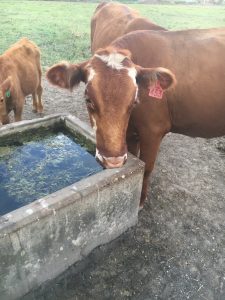Wilting Point and Field Saturation Point
Water is the lifeblood of the soil and pretty much every other form of life as well. Without it, all plant life and animal life would simply be impossible. And with too little of it animal life slows to a crawl. And plant life begins to wilt. With too much of it animals begin to flounder and drown. Plants begin to decay and die. Thinking about the effects of soil water extremes on plants is the focus of this discussion.
Under “normal conditions”, the water in the soil forms the solution, the “meal in a shake”, the electrolyte that feeds the plant roots with mineral nutrients. It is partially stuck to the soil and partly free to move in the open pore spaces of the soil. Under these conditions it does not completely fill the pore spaces, allowing the equally necessary air to be present. Plant roots mostly take the “free”water from the pore spaces to acquire both the water and the nutrients they need for survival. As soil conditions become dry there is relatively less “free water” and a higher percentage of water stuck (electrically attracted) to the soil particle. Each soil type and texture is different, but at a certain point there is not enough “free water” in the soil to support plant growth or even the maintenance of existing tissues. This is called the “wilting point” of the soil. The plant continues to transpire water into the atmosphere but is not able to replace it. Although there is still moisture in the soil, it requires too much energy from the plant to “tug” it away from the roots. The plant will then begin to suffer and eventually die, sooner or later, depending on the type of plant and the stress load upon it at the time.
Field Saturation on the other hand occurs when all of the pore spaces in the soil are filled with water. As the pores fill with water air is driven out. long with water, plant roots need both oxygen and carbon dioxide in the root zone to function properly. As the pores first fill up there is some air dissolved in the water and for a time little harm is done to the plant. But if the saturated condition continues for more than a few days the plants again begin to suffer, this time from lack of air. The roots become waterlogged, and begin to rot in places as decay organisms take advantage of the slowdown in life processes, The plants will begin to shed their roots (especially the deeper ones) to try to protect the roots closer to the surface. When normal conditions return, the plant may have to regrow roots before it can return to normal growth patterns. Again, this recovery becomes the most difficult if the plant is under stress at the time of the saturation event. The most common stress associated with crop failure is reproductive stress – flowering and fruiting. These activities place a heavy demand on the plant’s resources. If they are interrupted by a nutrient shortage or energy shortage, the plant may easily die and/or become severely diseased.



